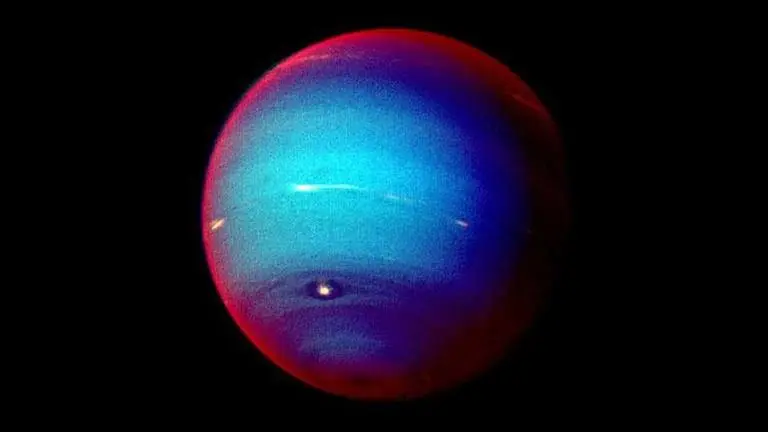Updated 19 September 2020 at 12:40 IST
Neptune surface pictures and features that you must check out
Neptune photos of its surface captured by the Voyager 2 are majestic. Here's everything you need to know about Neptune's surface characteristics and more.
- Science News
- 3 min read

Neptune surface pictures and features that you must check out | Image:
self
Neptune took over as the mantel of being the last planet and the most distant planet in our solar system after Pluto’s fall from grace. The 8th planet is a dark and cold world filled by supersonic winds. Neptune is around 30 times further than Earth from the Sun. Before discovering the planet of Neptune, its existence had been predicted by mathematics. Neptune is also the only planet that is not actually visible directly from the Earth’s surface, without the help of any equipment.
Neptune Surface Photos
Here is a closer look at The ice giant Neptune, Straight from the eyes of the Voyager 2:
Images sourced from Voyager.jpl.nasa.gov
Advertisement
Neptune Surface Features
- According to solarsystem.nasa.gov, Neptune is around 4 times bigger in size than Earth. If it is assumed that the Earth is of the size of a tennis ball, Neptune would be the size of a basketball or a football.
- Neptune revolves in an orbit around the sun just like every planet in the solar system. It is the 8th and the last planet in the solar system. The total distance between the Sun and Neptune is around 4.5 billion kilometers or 2.8 billion miles
- A Neptunian day is shorter than a standard Earth day. Neptune takes around 16 hours to rotate and complete a day, compared to the 24 hours Earth takes. A Neptunian year constitutes approximately 165 Earth years, as that’s the amount of time Neptune takes to complete one revolution around the Sun.
- Neptune is an icy world. Neptune Surface is filled with a hot, dense, icy substances such as ammonia, water, and methane. Neptune has a small rocky core.
- The atmosphere that surrounds the planet Neptune is quite gassy. The atmosphere is filled with molecular hydrogen, methane, and atomic helium.
- The planet Neptune has been discovered to have a total of 14 moons that revolve around the planet. The names of these moons have been picked up from Greek Mythology. The moons have been named after Sea Gods and Nymphs.
- The planet Neptune has 5 main rings around the planet and 4 ring arcs. These are clusters of dust and debris that have been formed with the help of the gravity from one of the nearby moons.
- The planet is not known to have the resources to support life. Neptune is a cold Lifeless planet
- There has been only one spaceship that has come close to the study the far way planet at length. Voyager 2 is the only spaceship capable of accomplishing this task to date.
- Neptune is sometimes further from the Sun than Pluto due to the elliptical nature of Pluto’s orbit
Advertisement
Promo image source: Voyager.jpl.nasa.gov
Published By : Sanchay Saksena
Published On: 19 September 2020 at 12:40 IST





